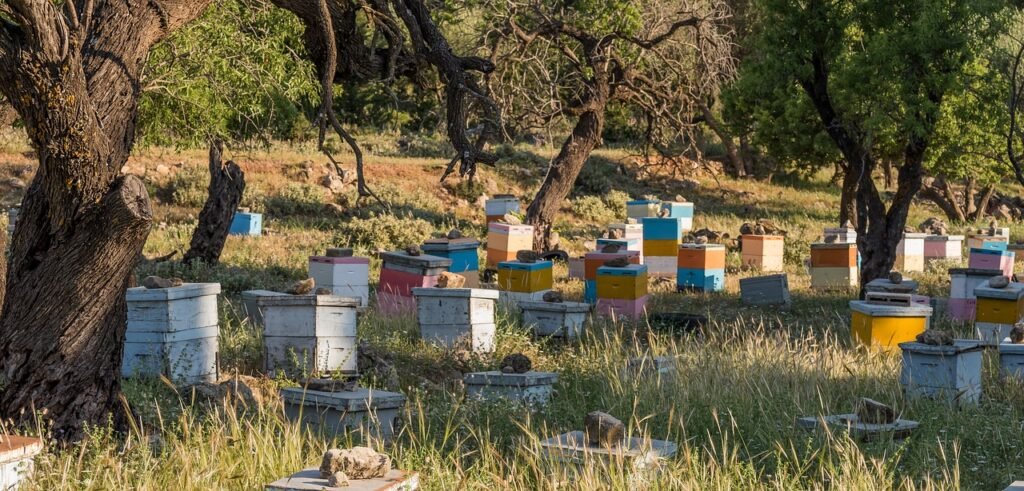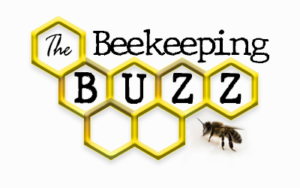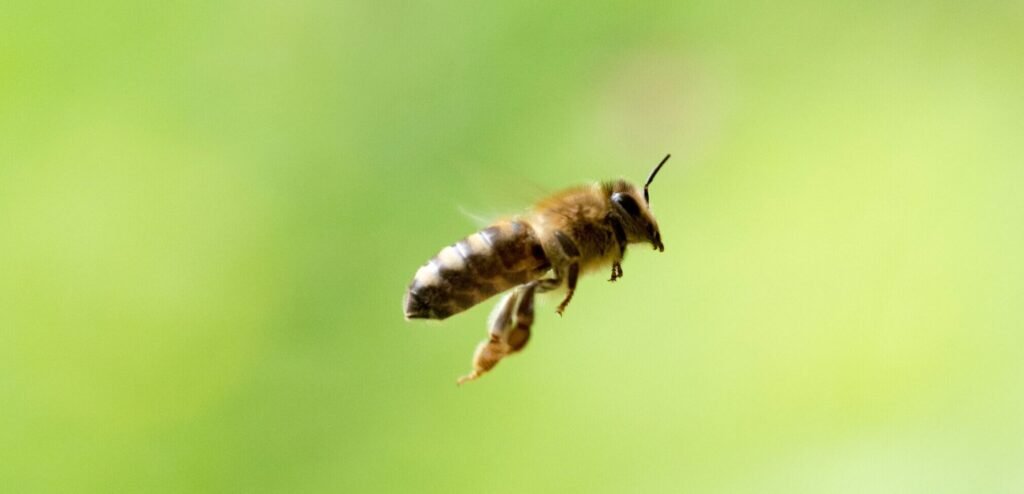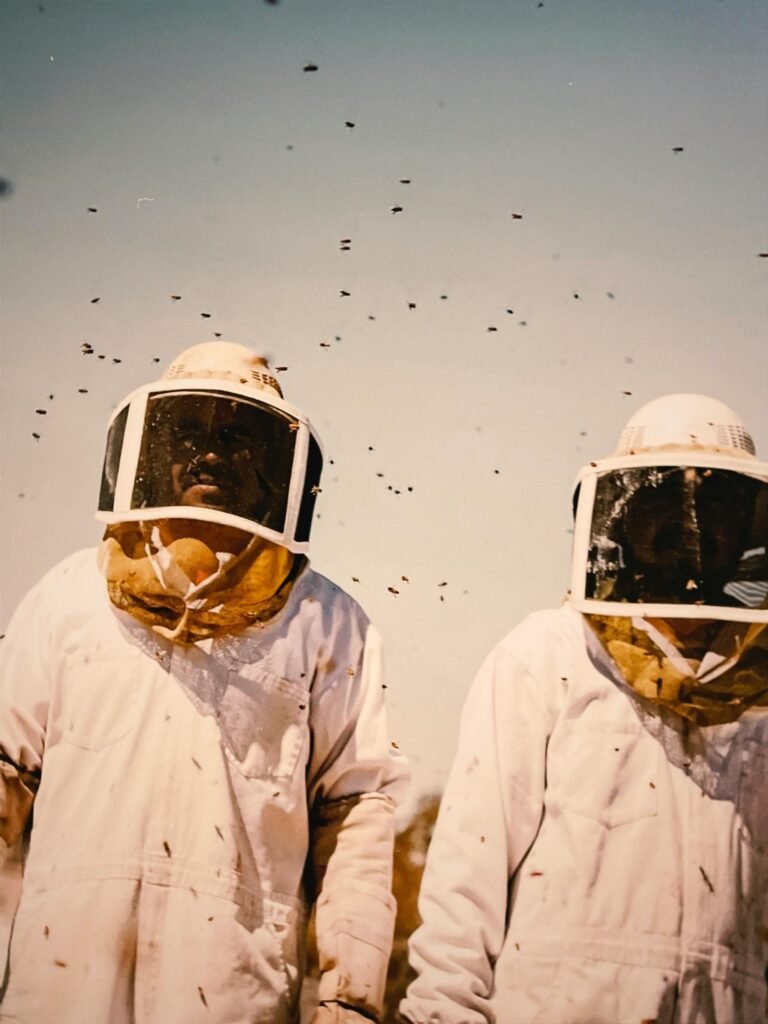Introduction to Beekeeping
Beekeeping, a practice with deep historical roots, has traditionally been pursued as a hobby by enthusiasts passionate about bees and their vital role in the ecosystem. Over the years, however, this quaint pastime has evolved into a potential business venture, attracting individuals and entrepreneurs alike. The rising interest in beekeeping can be attributed to a growing awareness of its ecological benefits and the increasing demand for bee products such as honey, beeswax, and royal jelly.
Ecologically, bees are essential pollinators, contributing significantly to the health and productivity of various crops and wild plants. Their role in maintaining biodiversity and supporting food production has garnered widespread recognition, prompting more people to consider beekeeping not just as a pastime, but as a means of contributing to environmental sustainability. This ecological awareness has dovetailed with market trends, where consumers are increasingly seeking natural and locally-sourced products, further driving the demand for bee-related goods.
The transition of beekeeping from a hobby to a business venture involves several considerations. Hobbyist beekeepers typically maintain a few hives, primarily for personal enjoyment and small-scale production. In contrast, commercial beekeeping requires a more substantial investment in terms of time, resources, and expertise, aiming for larger-scale production and profitability. As we delve deeper into the nuances of beekeeping, it is essential to understand the differences between these two approaches and assess the potential profitability of beekeeping as a business.
With the right knowledge, planning, and management, beekeeping can indeed be a profitable endeavor. This blog post aims to provide insights into the factors that influence profitability, the steps to start a beekeeping business, and the challenges one might face along the way. Whether you are a hobbyist contemplating an expansion or an entrepreneur exploring new opportunities, understanding the dynamics of beekeeping is crucial for making informed decisions.
Beekeeping as a Hobby
Engaging in beekeeping as a hobby presents a unique blend of challenges and rewards. Hobbyists usually start with a modest setup, which typically includes a hive, protective gear, and basic tools. The initial costs can range from a few hundred to a thousand dollars, depending on the quality and quantity of the equipment purchased. This investment is often driven by a passion for nature and the ecological benefits bees provide, rather than the pursuit of profit.
Time commitment is an essential aspect to consider for hobbyist beekeepers. Regular hive inspections, feeding, and health checks are crucial to maintain a thriving bee colony. These tasks, while time-consuming, offer a hands-on connection with nature that many find deeply fulfilling. Unlike commercial operations, hobbyists can afford to prioritize personal satisfaction and the well-being of their bees over financial returns.
The production scale in hobbyist beekeeping is typically small. A few hives can yield enough honey and bee products, such as beeswax and propolis, to meet personal needs and perhaps share with friends and family. This small-scale production is often seen as a bonus rather than the main goal, providing a tangible reward for the beekeeper’s efforts.
Hobbyists also emphasize the ecological impact of their activities. By maintaining bee colonies, they contribute to local biodiversity and the health of ecosystems through pollination. This ecological contribution is often a significant motivator, alongside the personal joy derived from the practice.
In essence, beekeeping as a hobby is driven by a love for bees and a desire to contribute positively to the environment. While it involves a considerable amount of time and initial investment, the emotional and ecological rewards can be immensely gratifying. For many, the question of “is beekeeping profitable” is secondary to the personal and environmental benefits they experience.
Beekeeping as a Business

When considering beekeeping as a business, it’s essential to recognize that profitability hinges on scale and efficient management. Unlike hobbyist beekeeping, commercial operations require a substantial number of hives to generate significant revenue. Typically, a profitable beekeeping business might start with at least 50 to 100 hives, gradually increasing as efficiency and market demand allow.
Initial investments include purchasing hives, bees, protective gear, and essential equipment such as honey extractors and smokers. Operational costs encompass feeding bees during off-seasons, managing hive health, and potential transportation costs for migratory beekeeping. These expenses can add up, necessitating careful financial planning and budgeting.
Revenue streams in beekeeping are diverse. Honey sales are the most obvious source of income, but they are far from the only one. Beeswax is another lucrative product, often used in candles, cosmetics, and lubricants. Royal jelly, a substance secreted by worker bees, has a niche market due to its purported health benefits. Additionally, pollination services are in high demand, especially in agricultural sectors that rely on bee pollination for crop yields. Another growing revenue stream is offering educational workshops for aspiring beekeepers, which can provide a steady income while promoting sustainable practices.
However, turning beekeeping into a profitable venture requires more than just understanding the biology of bees. It demands business acumen and meticulous market research. Understanding consumer trends, identifying potential markets, and developing effective marketing strategies are crucial. For instance, branding honey as organic or local can attract higher prices. Networking with local farms, participating in farmers’ markets, and establishing an online presence can significantly boost sales.
In conclusion, while beekeeping as a business offers multiple revenue opportunities, it requires a strategic approach to scale operations, manage costs, and capitalize on market trends. By combining beekeeping expertise with solid business practices, one can navigate the complexities of the industry and achieve profitability.
Creating a Beekeeping Business Plan
Developing a comprehensive business plan is essential for anyone looking to explore whether beekeeping is profitable as a business. A well-structured plan will guide your efforts and help ensure sustainable success. The first component to consider is market analysis. This involves researching the demand for honey and other bee products in your area, identifying your competitors, and understanding market trends. Knowing who your target customers are—whether they are individual consumers, retailers, or wholesalers—is crucial for tailoring your offerings effectively.
Next, outline your product offerings. In addition to honey, consider diversifying with products like beeswax candles, bee pollen, royal jelly, and propolis. Diversification can enhance your revenue streams and make your business more resilient. Your pricing strategy should be competitive yet reflective of the quality of your products. Conduct a cost analysis to determine the minimum price points that cover your costs while ensuring a reasonable profit margin.
Marketing is another vital element of your business plan. Utilize both online and offline strategies to reach your audience. Social media, a well-optimized website, and local farmers’ markets are excellent platforms for promoting your bee products. Highlighting the benefits of natural and locally-produced honey can resonate well with health-conscious consumers.
Understanding local regulations and securing the proper permits is indispensable. Compliance with local laws ensures that your operations run smoothly and avoids potential legal issues. Check with local authorities for specific requirements related to beekeeping, such as zoning laws, health regulations, and necessary certifications.
Finally, set realistic goals and timelines. Establish both short-term and long-term objectives to keep your business on track. Include milestones for hive expansion, sales targets, and profitability benchmarks. Periodically review and adjust your business plan to align with market changes and business growth.
By thoroughly addressing these components in your beekeeping business plan, you can create a solid foundation for a thriving enterprise. Understanding how to start a beekeeping business effectively will significantly increase your chances of turning your passion into a profitable venture.
Initial Costs and Investments
Starting a beekeeping business involves several initial costs and investments that one must consider. Firstly, the essential equipment includes beehives, which can range in cost from $200 to $500 per hive, depending on the type and quality. Protective gear is another critical investment, typically costing around $100 to $200 for a full suit, gloves, and a veil. Extraction tools such as honey extractors can vary widely in price, generally ranging from $150 for manual versions to upwards of $500 for electric models.
In addition to equipment, the cost of purchasing bees is a significant factor. A nucleus colony, commonly referred to as a “nuc,” can cost between $150 and $200, while a package of bees with a queen might range from $100 to $150. Setting up an apiary also entails site preparation costs. If you don’t have land, renting or purchasing property for your apiary will add to your expenses. Rental fees can vary based on location, but expect to pay anywhere from $50 to $100 per month for suitable land. If buying, land prices can range significantly based on region and size.
Furthermore, starting a beekeeping business from scratch versus purchasing an existing apiary presents different financial implications. Starting from scratch requires initial outlays for all the aforementioned equipment and bees, plus the time and labor to establish the hives. Conversely, buying an existing apiary can provide an immediate operational setup, often including established hives, bees, and sometimes even customer contracts. However, the upfront cost is usually higher, potentially ranging from $2,000 to $10,000 or more, depending on the scale and success of the business being acquired.
Understanding these initial costs and investments is crucial for anyone considering how to start a beekeeping business. Proper planning and budgeting can help ensure that the venture is financially viable and set up for long-term success.
Operational Costs and Labor
When considering the question “is beekeeping profitable,” it is essential to understand the ongoing operational costs and labor involved. The expenses for a beekeeping business extend beyond the initial investment in hives and bees. Regular operational costs include feed for the bees, especially during periods of low nectar flow, and medications to prevent and treat common bee diseases and pests such as Varroa mites. These preventive measures are crucial to maintain colony health and productivity.
Maintenance of hives is another significant expense. Over time, beekeeping equipment such as frames, boxes, and protective gear will need repair or replacement. Seasonal labor is also a critical factor, especially during peak periods like honey harvesting and processing. For a commercial beekeeping operation, the time commitment can be substantial. Regular hive inspections are necessary to monitor the health and productivity of the colonies. These inspections help identify issues early, allowing for prompt intervention and minimizing potential losses.
Harvesting honey and other bee products is labor-intensive. It involves extracting, filtering, and packaging the honey, which requires both time and specialized equipment. The cost of labor can vary significantly based on the size of the operation. Smaller beekeeping businesses may rely on family members or part-time help, while larger operations might need to hire full-time employees or seasonal workers. The availability and cost of skilled labor can impact overall profitability.
In addition to direct labor costs, beekeepers must also consider the time required for marketing and selling their products. Establishing a customer base, managing sales channels, and ensuring product quality are all essential components of a successful beekeeping business. The cumulative effect of these operational costs and labor requirements highlights the importance of careful planning and management to achieve profitability in beekeeping.
Revenue Streams and Profit Margins
Beekeeping offers multiple revenue streams that can significantly impact its profitability. The primary source of income for beekeepers is honey production. High-quality honey commands premium prices in the market, and its profitability is heavily influenced by factors such as market demand, seasonal variations, and regional preferences. For instance, specialty honeys like Manuka or organic honey often fetch higher prices due to their perceived health benefits and unique flavors.
Beyond honey, beeswax products present another lucrative opportunity. Beeswax is a versatile material used in a variety of products, including candles, cosmetics, and food wraps. The profitability of beeswax hinges on the beekeeper’s ability to produce and market high-quality products. Crafting artisanal beeswax candles or skincare products can attract niche markets willing to pay a premium.
Propolis, a resin-like material collected by bees, is known for its medicinal properties and is used in health supplements, ointments, and tinctures. The demand for propolis products is growing, driven by the increasing consumer interest in natural and holistic health solutions. This adds another layer of profitability to a beekeeping business.
Pollination services are another significant revenue stream for beekeepers. Commercial farmers often hire beekeepers to pollinate crops, ensuring higher yields and better-quality produce. The income from pollination services can be substantial, particularly in regions with extensive agricultural activities. The profitability of this service depends on the beekeeper’s ability to manage and transport hives efficiently.
Profit margins in beekeeping vary widely based on several factors. Market demand, product quality, competitive landscape, and operational efficiencies all play crucial roles. For example, pricing strategies can greatly affect profitability. Beekeepers may choose to sell directly to consumers at higher prices through farmers’ markets or online platforms or opt for bulk sales to wholesalers at lower margins. Each strategy has its pros and cons, influencing overall profit margins.
Understanding these diverse revenue streams and the factors that impact them is essential for anyone considering how to start a beekeeping business. By leveraging these insights, beekeepers can craft effective strategies to maximize their profitability in this multifaceted industry.
Return on Investment and Long-Term Planning
Evaluating the return on investment (ROI) is a critical step for anyone considering how to start a beekeeping business. The initial outlay includes purchasing hives, bees, protective gear, and other essential equipment. Typically, the starting cost ranges from $200 to $500 per hive, depending on the quality of materials and the scale of the operation. On average, it takes about one to two years to break even, assuming proper management and favorable conditions.
Long-term planning is indispensable for ensuring the sustainability and profitability of a beekeeping enterprise. Sustainable practices, such as rotating apiary locations and avoiding the overuse of chemical treatments, help maintain healthy bee populations. This, in turn, contributes to consistent honey yields and other bee-related products like beeswax and propolis, which diversify income streams.
As the business grows, scaling becomes an essential consideration. Expanding the number of hives can significantly increase productivity but also necessitates additional labor and management oversight. Market adaptation is another vital aspect; staying attuned to consumer trends and shifting demands, such as the rising preference for organic honey, can provide competitive advantages.
Moreover, incorporating technology, like hive monitoring systems, can optimize operations and reduce labor costs. These systems help monitor hive health, temperature, and honey production, enabling data-driven decisions that enhance productivity and profitability. By leveraging technological advancements, beekeepers can achieve higher ROI and ensure the long-term viability of their ventures.
In conclusion, while the initial investment in beekeeping may seem substantial, the potential for profitable returns exists with proper planning and management. Sustainable practices, scalability, and adaptability to market changes are pivotal in establishing a successful beekeeping business. By focusing on these elements, beekeepers can navigate the challenges and reap the rewards of this multifaceted industry.


